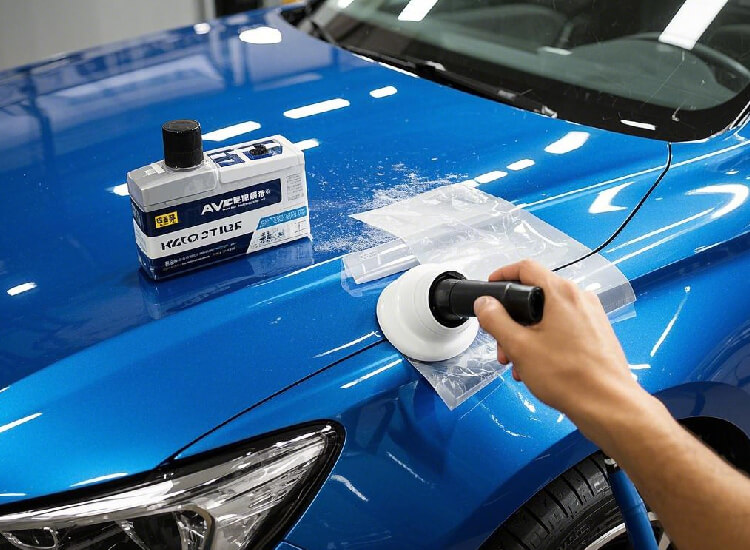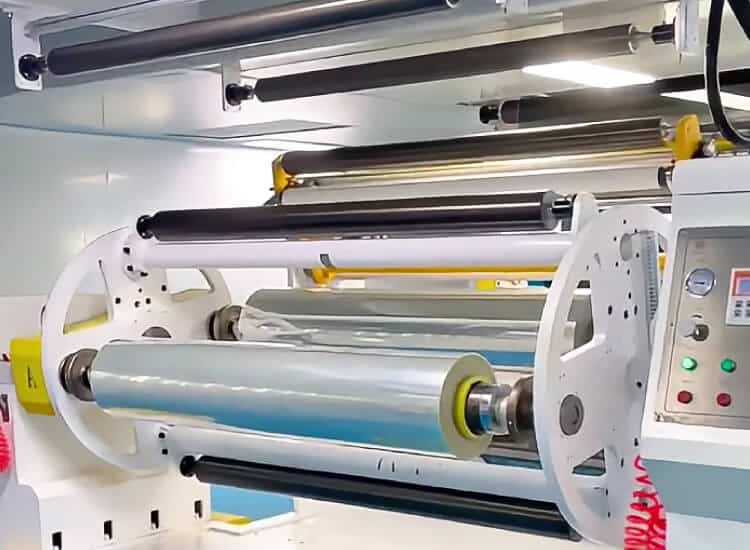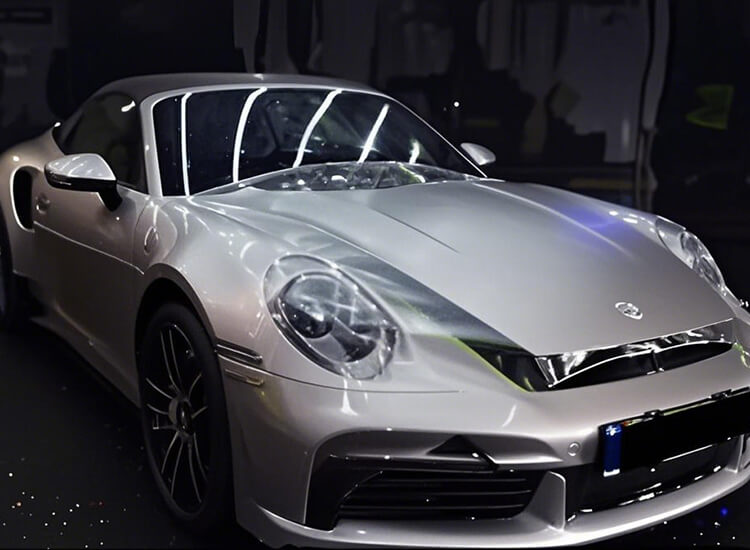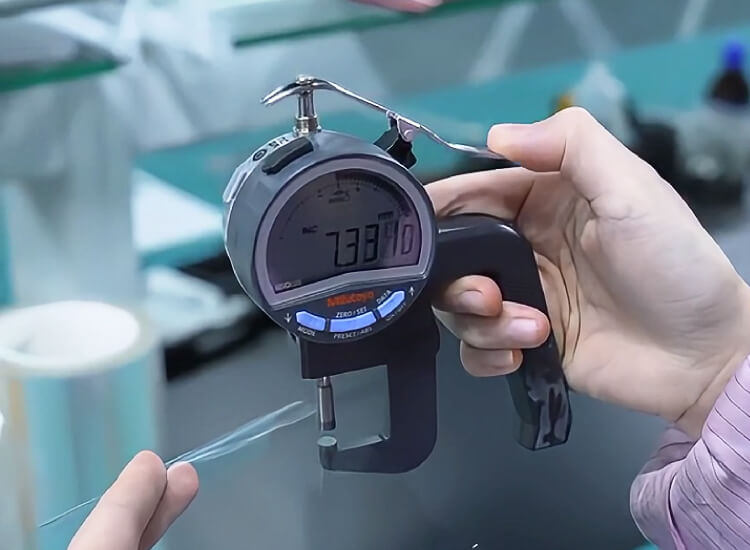Paint Protection Film vs Ceramic Coating: Which Is Better?
When protecting your car’s paint, two leading options are Paint Protection Film (PPF) and Ceramic Coating. Many car enthusiasts and new vehicle owners alike find themselves comparing PPF vs Ceramic Coating to determine which offers the best defense for their car’s exterior. Both serve to protect and preserve your car’s paint, but their benefits and applications differ significantly. This guide will walk you through the differences between PPF and Ceramic Coating, helping you understand why PPF is often considered the go-to solution for comprehensive paint protection.

What is Paint Protection Film and How Does it Work?
Paint Protection Film is a transparent, durable urethane film applied to a car’s exterior to protect against common damage sources like rocks, road debris, and environmental factors. This clear bra layer adds a scratch and swirl mark protection barrier that helps keep your vehicle’s surface looking new. One of the standout features of automotive Paint Protection Film is its self-healing properties, which allow it to repair minor abrasions on its own, giving it an edge over other protective solutions like Ceramic Coating.
PPF works by absorbing impacts from rocks and road debris while also preventing oxidation and fading caused by UV exposure. Its chemical resistance prevents damage from acidic contaminants, and some types even offer hydrophobic properties to repel water and dirt, keeping the car’s surface clean and easier to maintain.
How Does Paint Protection Film Work?
Advantages of Using Paint Protection Film for Car Paint
Applying Paint Protection Film to a car’s exterior provides several key benefits, from physical protection to a long-lasting glossy finish. Here are some major advantages of using Paint Protection Film:
Rock chips and scratch resistance
Thanks to its thick, protective nature, Paint Protection Film offers unmatched defense against chips and scratches.
UV protection
It offers chemical stain protection by blocking contaminants like acidic rain and bird droppings.
Long-term gloss and clarity
By using a glossy finish Paint Protection Film, your vehicle’s paint will retain its showroom shine for longer.
How Paint Protection Film Protects Against Chips and Scratches
One of the standout features of Paint Protection Film is its resilience against rock chips and road debris, which is especially valuable for car owners who frequently drive on highways or rugged roads. This self-healing Paint Protection Film absorbs minor impacts and abrasions, returning to its original form after an indentation, and offering long-term benefits of Paint Protection Film. PPF provides physical defense against minor physical damage and can self-heal.
About Ceramic Coating and How It Works?
Ceramic Coating is a liquid polymer that, when applied to a vehicle’s exterior, bonds chemically with the factory paint to form a durable, protective layer. This layer is highly hydrophobic, meaning it repels water, making it easier to clean and reducing the buildup of contaminants. Ceramic Coating also provides a high-gloss finish, which enhances the paint’s appearance.
Beyond aesthetics, it helps guard against oxidation, UV damage, and minor chemical stains. While Ceramic Coating doesn’t protect against larger impacts like Paint Protection Film does, it excels at keeping the car looking cleaner and shinier for longer, providing an essential layer of protection for the paint.
Comparison: Paint Protection Film and Ceramic Coating
Though Ceramic Coating is also popular, it differs from Paint Protection Film in several ways. Ceramic Coating vs PPF is often a choice between physical impact protection and enhanced surface properties. Ceramic Coating creates a hydrophobic surface that repels water and helps keep the car cleaner between washes, while PPF is thicker and designed to absorb damage. If rock chips, scratches, and swirl marks are a concern, PPF is the better choice. However, Ceramic Coating can enhance gloss and make the car easier to clean.
Combining The Two for Maximum Protection
To get the ultimate paint protection film and Ceramic Coating combo, many car owners apply PPF on vulnerable areas, such as the front bumper, hood, and side mirrors, before adding a layer of Ceramic Coating. This combination offers complete protection: PPF protects against physical damage, while Ceramic Coating adds chemical resistance and a hydrophobic layer across the entire car, making cleaning and maintenance easier. This dynamic duo of Paint Protection Film and Ceramic Coating is ideal for anyone wanting to extend the life of their car’s paint and enhance its appearance.
Maintenance Tips for Paint Protection Film and Ceramic Coating
To ensure the longevity of car paint protection film and Ceramic Coating, regular maintenance is key. Avoid abrasive washes and use products specifically designed for PPF and Ceramic Coating to avoid degrading the protective layers. PPF vs Ceramic Coating maintenance needs may vary, but keeping the surfaces free from contaminants will ensure your car’s paint remains in pristine condition for years.
Is Paint Protection Film Worth It for Car Owners?
For anyone considering adding Paint Protection Film to their vehicle, it’s worth evaluating the long-term benefits of Paint Protection Film versus the upfront cost. Given its UV and chemical resistance, self-healing abilities, and protection from chips and scratches, PPF is highly valued among car enthusiasts and daily drivers alike. By choosing PPF along with Ceramic Coating for additional paint protection, you’re making a long-term investment in your car’s appearance and value.
Drive Protected: The Ultimate Solution for Car Paint Longevity
Choosing both Paint Protection Film and Ceramic Coating can significantly extend your car’s paint life and protect its value. With PPF for front bumper protection and other high-impact areas and Ceramic Coating to enhance gloss and ease of cleaning, you get comprehensive protection against both physical and chemical damage. This approach ensures your vehicle stays showroom-ready and looks stunning every day you drive it.

PPF vs Ceramic Coating: Which Is Better?
Choosing between Paint Protection Film (PPF) and Ceramic Coating largely depends on the type of protection you’re seeking for your vehicle. PPF is thicker and has self-healing properties, making it highly effective at shielding your car from rock chips, scratches, and road debris. It’s ideal for areas most vulnerable to impact, such as the front bumper, hood, and side mirrors.
On the other hand, Ceramic Coating offers a durable, hydrophobic layer that repels dirt and water, reduces the risk of chemical stains, and enhances the paint’s gloss, giving the car a shiny, easy-to-clean finish.
For car owners focused on comprehensive paint protection, enhanced appearance, and easy installation, PPF is the ideal choice.
However, for those seeking ultimate protection and a flawless finish, a combination of both solutions may be the best option.
Which Lasts Loner, PPF or Ceramic Coating?
For longevity, Paint Protection Film (PPF) generally outlasts Ceramic Coating. For long-term, impact-resistant protection, PPF is the more durable choice, while Ceramic Coating excels in maintaining a high-gloss, easy-to-clean surface.
Paint Protection Film: 5-10 Years
Thanks to its thick, protective nature, Paint Protection Film offers unmatched defense against chips and scratches.
Ceramic Coating: 2–5 Years
In contrast, Ceramic Coating typically lasts around 2–5 years, depending on environmental conditions and maintenance. While it provides an effective barrier against minor stains, oxidation, and contaminants, it lacks the physical resilience of PPF.
Cost For A Whole Car: Ceramic coating vs PPF
Paint Protection Film (PPF): $4000-$8000 or More
PPF is more expensive than Ceramic Coating due to its thickness, durability, and ability to protect against physical damage like rock chips and scratches. Applying PPF can cost thousands of dollars, especially if covering larger or high-impact areas like the hood, bumper, and side mirrors.
Ceramic Coating Cost: $2000-$5000
On the other hand, Ceramic Coating is more affordable and typically costs a fraction of PPF’s price. While it doesn’t offer the same level of impact resistance, Ceramic Coating provides a strong hydrophobic layer, making the car easier to clean and maintaining its shine for longer. For car owners mainly concerned with preserving a high-gloss look and reducing maintenance time, Ceramic Coating can be a cost-effective solution.
Final Suggestions
Choosing between Paint Protection Film (PPF) and Ceramic Coating doesn’t have to be an either-or decision. Each option brings unique benefits to protect and preserve your vehicle’s paint. PPF offers unparalleled protection against chips, scratches, and UV damage, making it ideal for high-impact areas, while Ceramic Coating provides a hydrophobic, glossy layer that repels dirt and contaminants, enhancing both appearance and ease of maintenance. Together, they form the ultimate defense for keeping your car’s paint in pristine condition, helping you drive with confidence and style every day. If you’re ready to drive protected and keep your car’s paint looking flawless, you should consider scheduling a PPF and Ceramic Coating application.

Looking For a High-quality PPF Manufacturer or Supplier?
ELOV PPF, a professional Paint Protection Film (PPF) manufacturer from China, specializes in providing high-quality PPF solutions and OEM services tailored to the needs of wholesalers and brand owners worldwide. With a focus on durability, advanced technology, and customization, we ensure that our products meet the highest industry standards. Whether you are looking to enhance your product offerings or build your brand with premium protection films, ELOV PPF is your trusted partner. Reach out to us today to discuss your business needs, explore our extensive product options, and discover how we can support your success in the competitive PPF market.
| ELVO Offers Fast Paint Protection Film OEM |
| 25 Days |
| From Ideas To Mass Production |
| Start OEM For Your Brand Now! |






